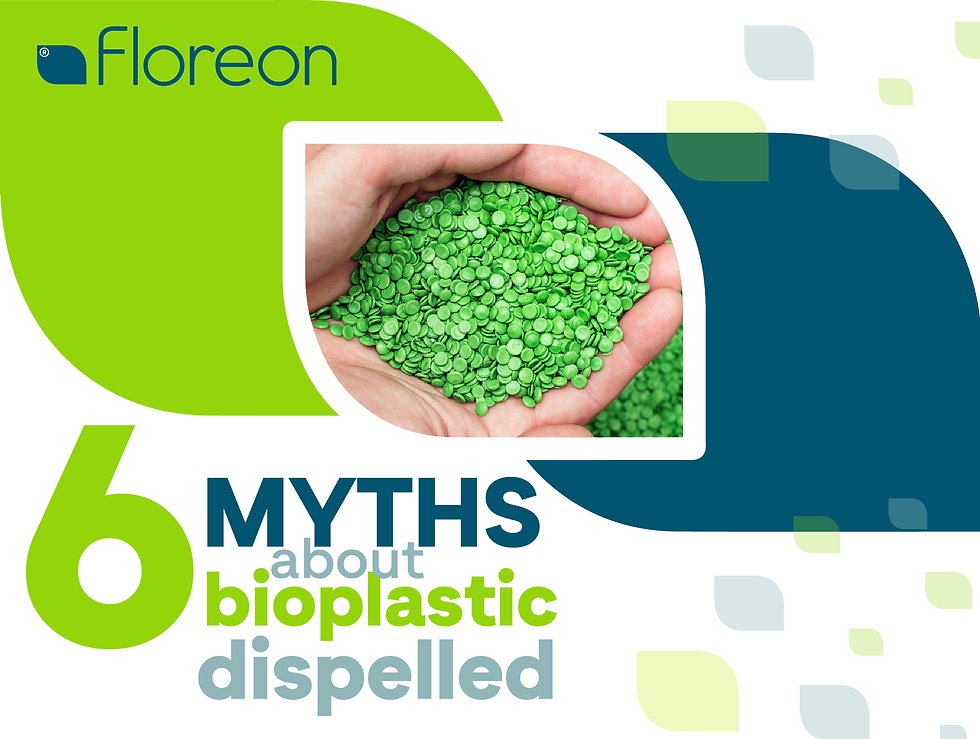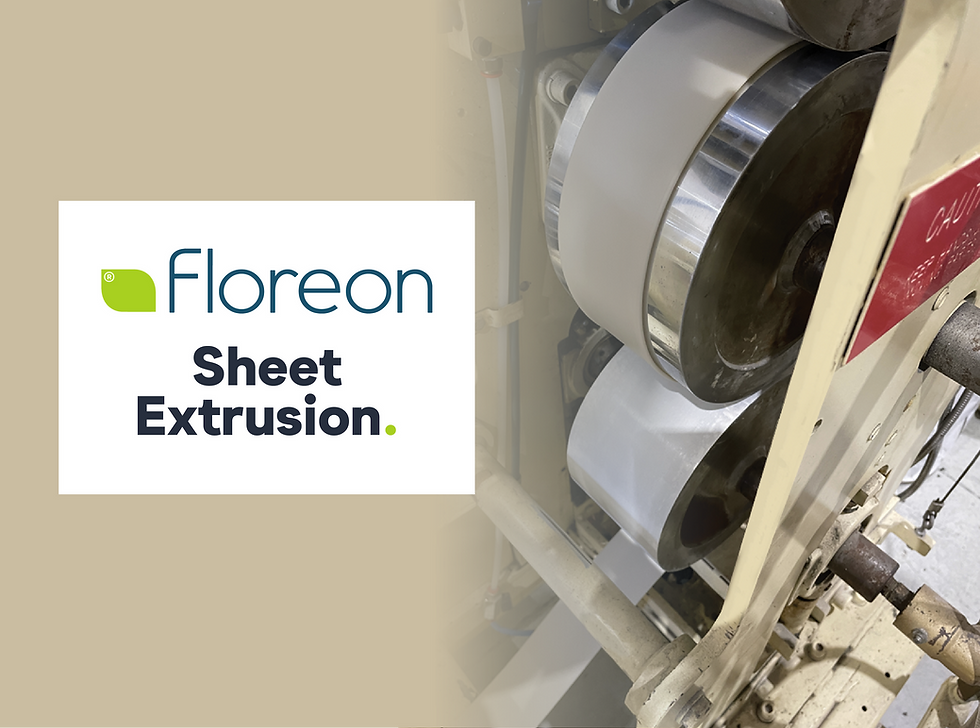Six myths about PLA bioplastic dispelled
- Andrew Gill

- Feb 6, 2022
- 4 min read
Updated: Feb 7, 2022

Not everyone is convinced that PLA is a sustainable plastic or viable for mass production. We credit PLA for its 3D printing potential, but this plant-based plastic gets overlooked for other applications due to environmental concerns, cost and durability, to name a few. Due to the nature of our business, we get told about these concerns repeatedly.
Yet years of research and development proudly puts Floreon in the position to dispel the myths about PLA. We feel that it's vital to communicate these so that industries, such as electricals, toys and consumer goods, can appreciate the incredible potential of Floreon grade PLA and its commercial viability for any plastic component.
Myth 1: Bioplastics compete with food production

Aside from greenhouse gas emissions being up to seven times lower than oil-based ABS during the manufacturing process, other environmental benefits are surfacing as plant-based plastic demand increases.
At a recent European Bioplastics conference, data suggest that in terms of taking agricultural land, we know that '0.7 million hectares were used in 2021 to grow the renewable feedstock for bioplastic production; just over 0.01 percent of the global agricultural area of 5 billion hectares.'
Visually, that is the same size as an average cherry tomato next to the Eiffel Tower (source EUBP/IfBB/nova-Institute, 2014). This level of new data dispels the environmental myth between the renewable feedstock for food and feed and the production of bioplastics. Source
Myth 2: PLA is not as safe as ABS

PLA is a material that can go from plant to soil in a complete life cycle without impacting its environment, which highlights how safe plant-based plastic can be. However, additive formulas can affect its original purity, which has seen mainstream coverage in recent years, mainly regarding 3D printing. So in its original state, where there are no extra additives mixed with the filament, PLA is safe to use in food contact and toys.
Floreon grades of PLA - grades that make it flame retardant, durable and recyclable - go through thorough testing and assessment phases to maintain its safety from toxicity to halogen-free. This research and development positions Floreon PLA as unique from other types of PLA in the market.
Myth 3: Production lines will have to change

That myth is incorrect. Floreon is a drop-in solution, and our grade of PLA works on existing tooling. Manufacturers won't need new moulds and equipment as long as clients commit to thorough testing and trials ahead of full-scale production. We appreciate that the tale behind the myth focuses on PLA working as a 3D printing element and fails as an injection mould plastic, yet our years of research and development can prove how wrong this assumption can be.
Myth 4: PLA is expensive

As a relatively new compound of plastic requiring new infrastructure, raw material and investment, natural supply versus demand have kept costs high, especially in comparison to ABS. However, 2021 - for the first time in a long time - has seen such a price hike in oil that plastic suppliers can no longer absorb the cost. Oil prices are volatile, and that - along with the pressure to reduce carbon emissions - is forcing brands to consider alternative solutions. (Source: Acrylonitrile Butadiene Styrene Price Report | Compliance and Methodology (icis.com))
Now brands see PLA as a viable cost option as plant production is not strongly affected by the oil price. Over the past 12 months, PLA pricing hasn't moved. It's also set to increase in supply to help bring the cost down. European Bioplastics predicts that "global bioplastics production capacities are set to increase from around 2.42 million tonnes in 2021 to approximately 7.59 million tonnes in 2026. Hence, the share of bioplastics in global plastic production will pass the two per cent mark for the first time." Source
Myth 5: You can't recycle PLA

PLA based materials are commonly encouraged for composting, especially from a food packaging point of view, but Floreon has multiple end of life options. That includes both mechanical and chemical recycling.
For example, flame retarded ABS is not recycled today due to compounds incorporating halogens. However, independently published research has shown that products made from recycled PLA can meet market demands, and that recycling of bioplastics is environmentally beneficial. Source: PLA in the waste stream (www.fraunhofer.de )
We want to work with brands and recyclers to make this a reality.
Myth 6: PLA is too brittle for demanding applications

Floreon can match the performance of ABS with no compromise. Reaching that goal is why we established Floreon in the first place. We saw the potential beyond 3D printing filament. We envisaged a future where products such as plugs, plastic toys and automotive components could directly replace ABS plastic with a material that can break down to water, oxygen, and carbon dioxide to refeed the earth and produce more renewable plant-based plastic to meet demand.
However, for this to become a reality, major brand owners need to unlearn what they know about PLA and relearn its potential right now.
Floreon is redefining PLA for the future of our planet, and to arrange a conversation, complete our contact form.



Comments